1985 PONTIAC TRANS AM EXCELLENT CONDITION LOW MILES 5 SPEED MANUAL T-TOPS
- Price: Ask a price!
- Condition: Used
- Item location: Newark, California, United States
- Make: Pontiac
- Model: Trans Am
- SubModel: TRANS AM
- Type: Coupe
- Trim: TRANS AM
- Year: 1985
- Mileage: 50,181
- VIN: 1G2FW87H9FL626578
- Color: Blue
- Engine size: 5.0 LTR. 305 cid
- Number of cylinders: 8
- Fuel: Gasoline
- Transmission: Manual
- Drive type: RWD
- Interior color: Gray
- Options: Cassette Player
- Vehicle Title: Clear
Pontiac Trans Am 1985 Description
UP FOR SALE IS MY 1985 PONTIAC TRANS AM
THIS IS A VERY CLEAN CAR WITH A SMOOTH RUNNING ENGINE AND 5 SPEED MANUAL TRANSMISSION WHICH WORKS GREAT
THIS CAR HAS VERY LOW MILES AND I HAVE BOUGHT THIS FROM A LADY WHO WAS THE FIRST OWNER OF THE CAR AS I UNDERSTOOD. THE ENGINE BAY, INTERIOR AND TRUNK ARE ALL IN EXCELLENT CONDITION. THIS IS A RUST FREE CAR THAT IS CURRENT REGISTRED IN CALIFORNIA. I HAVE CLEAR TITLE IN HAND UNDER MY NAME.
HERE IS A VERY GOOD AND INFORMATIVE ARTICLE ON 1985 PONTIAC TRANS AM
1985 Pontiac Trans Am - the Bird Soars AgainPublished on May 23, 2013 | Written by Pete Dunton | |A heavy burden was placed on the 1985 Pontiac Trans Am, it was the first substantial styling update of the third generation Trans Am which had seen a successful launch during the 1982 model year. By 1984, Trans Am production was 55,374 units which was the best sales year for the third generation Trans Am. However it would be tough to maintain these sales since a whole new crop of performance oriented 2+2 coupes from Europe and Japan were littering the U.S. market by 1985. It was vital that the sleek but traditional V8 powered muscle car Trans Am remained at the top of the performance heap for 1985. With this in mind the 1985 restyle was vital to the future of the Trans Am. Fortunately Pontiac was on top of its game and released what was considered by most as a very attractive styling update.
In fact, the 1985 styling update would remain with the Trans Am through the 1990 model year. It consisted of an updated front fascia which no longer had the 1982-1984 Trans Am's twin air inlets. The only exception was the 1983 Trans Am Daytona Pace Car edition and the 1984 Trans Ams equipped with the W62 Aero Package, these Trans Ams had these air inlets closed with with plastic plates and they had a front lower air dams and side and rear skirts which the other Trans Ams from these years didn't have. The W62 Aero Package consisted of all the same twin inlet cover plates, air dam, and side skirts that were standard on the 1983 Daytona Pace Car edition. Though this package looked good it had a tacked on look, as if it was an afterthought - a very good one, but still an afterthought. This was where the 1985 Trans Am took a few leaps forward, the front end would now be closed to air (with no cover plates present). A lower front air dam along with side and rear skirts were now standard. However instead of looking like an aftermarket kit, all of these items now had an integrated look. It was a much classier touch. But there was nice standard item which was a first time offering on the Trans Am - driving/fog lights were now integrated into the front lower air dam. The Trans Am's hood with the driver's side bulged scoop which had been standard for 1984 and optional for 1982-1983 was now replaced with a flat hood that had front and rear vents for under-hood cooling. The 1982-1984 winged spoiler was still available however standard was a new (wrap-around the rear hatch window) tail type spoiler which was only available in flat black. The air extractors which had been on the front quarter panels behind the front wheels have in one form or another been on every Trans Am since the beginning, for 1985 were still present. The previous Trans Am's full length blacked-out taillights were also gone and replaced with new curved but smooth units that used a waffle pattern of black and red. Only up close could you see the waffle pattern and the little red rectangles, from a distance the taillights looked almost completely black. It was the same waffle pattern black and red taillight type design that made its appearance on the 1984 Pontiac Fiero. The really big news was the full hood bird decal (RPO code DX1) had made its return after a four model year hiatus. Pontiac ran away from the wild hood bird decal starting in 1982. Even though the hood bird got bigger with the late-1982 and 1983 D53 hood bird option, and the 1983 and 1984 DX1 which put a decent sized bird on the hood scoop, these bird decals were still very small compared to the massive hood bird option on the 1973 to 1981 Trans Am - the revived 1985 optional full hood bird decal was just as large as these.
The good news was that all the suspension pieces of the Trans Am's top handling package for 1984, the WS6, were carried over to 1985 and were standard on the Trans Am. This move by Pontiac substantially improved handling for the base-level Trans Am. Unfortunately the rear disc brakes of the 1984 WS6 package didn't carryover to the base Trans Am. To get 4-wheel disc brakes, either the WS6 suspension package or the J65 rear-disc brake option had to be ordered. The Trans Am was standard with the 15x7 inch deep dish Hi-Tech cast-aluminum wheels. And a no-cost option was the subjectively more European looking 15x7 inch diamond-spoke cast-aluminum wheels. And married to either of these wheels were standard P215-65R15 Eagle GT radial tires available in either all-black or white lettering sidewalls. There was the rare RPO code QAC option which upgraded the "R" rated tires to "VR" rated P235-60VR15 Goodyear Eagle Gaterback tires which were available with both styles of 15x7 inch wheels. These tires gave the Trans Am a lot more grip on the road and because of their speed rating they could safely exceed 130 mph. Back in 1985, VR rated tires was what exotic cars such as the Ferrari Testarossa were equipped with, since it was the highest tire speed rating at the time.
For those who wanted to take things up another handling notch, there was the WS6 handling package which had new gas pressured shocks and thicker anti-roll bars - 34 mm up front and 25 mm in the rear. 4-wheel disc brakes were standard with the WS6 package as previously noted. Most resources today show that the WS6 package for 1985 only came equipped with 16 x 8 inch Hi-Tech turbo cast wheels and P245-50VR16 Eagle Gaterback tires. However there are a few confirmed Trans Ams that left the factory assembly line with one of the two 15x7 inch wheels types previously mentioned and the P235-60VR-15 Gaterback tires from the QAC package. It's unknown why Pontiac also offered the QAC package, however it may have felt some buyers preferred 15-inch wheels.The 16x8 inch Hi-Tech wheels were the same wheels first seen on the 1984 Trans Am 15th Anniversary Edition. On the skidpad the WS6 equipped Trans Am on the average garnered a respectable .85 g. Figures don't really tell the whole picture here, Pontiac with the WS6 Trans Am wasn't seeking the absolute best handling numbers, its goal was instead a very good handling suspension that also had a very good ride quality. This is where the Trans Am which equaled the top dog Camaro for 1985, the Iroc-Z, in handling numbers, differed. The Iroc-Z which had a take no prisoners rough riding suspension, the WS6 Trans Am provided a much more pleasant ride in rough urban pavement type driving. The WS6 in other words, provided the best of both worlds thereby making the Trans Am a great handling car that was also civilized on uneven or rough pavement.
Pealing away the onion of a slippery and very modern looking body style, the Trans Am was basically an old school car - solid rear axle, rear wheel drive, and a V8 under the hood. And that was just what the buyers wanted. Whereas many newcomers to the 2+2 performance coupe market which were from Japan or Europe, used hopped up 4 and 6 cylinder motors. To traditional muscle car buyers, the V8 powered Trans Am embodied everything they longed for in a performance car back in the 1980s. What had changed since the heyday of the original muscle car era, was the Trans Am had a .32 drag coefficient which made it the most aerodynamic performance car you were going to find in 1985. The Trans Am looked like a Ferrari with its sleek styling and pop-up headlights. Back in 1985 anything that went 0-60 mph faster than 10 seconds was considered fast. By today's standards that would be equal to about 6 seconds. By this benchmark the Trans Am delivered, all its motors provided sub-10 second 0-60 mph times. No matter what engine was selected, that old burbling deep resonance V8 sound heard through a performance tuned exhaust system was standard.
For 1985, there were three V8 choices, all different iterations of Chevrolet's small-block 5.0 liter (305 CID) V8. Unfortunately for 1985, the 5.7 liter Chevrolet small-block V8 was not yet available on the Trans Am - buyers would have to wait another two model years. Standard was the tried and true LG4 4-bbl 5.0 liter V8 rated at 155 horsepower. It was available with a 4-speed automatic (with overdrive) or the Borg Warner T5 5-speed manual transmission. The automatic equipped LG4 Trans Am was good for about high-9 second 0-60 mph runs and the manual was somewhere in the mid-9 second range. Next up the power scale was the 190 horsepower and 240 lb-ft of torque L69 4-bbl 5.0 liter HO V8. The L69 only came equipped with the T5 5-speed manual. Worth noting the L69 which had been a Trans Am option since late-1983 model year, had a standard hood scoop provided cold air induction system for 1983 and 1984. Since the hood scoop was gone for 1985, Pontiac just replaced the cold air induction setup with the Camaro Z28 and Iroc-Z's dual snorkel air filter assembly. For the buyer who wanted the fastest manual transmission equipped 1985 Trans Am, the L69 was the engine to have. Hot Rod magazine back in the day test drove a factory stock L69 powered 1985 Trans Am and obtained a quarter-mile time of 15.3 seconds at 92.41 mph. Though Hot Rod didn't test its 0-60 mph performance, it was capable of low-7 seconds in that speed run. With this type of performance, on the one hand it was surprising that only 1,665 L69 1985 Trans Ams were produced. But on the other hand the big hype for 1985, wasn't the L69 but the new LB9 5.0 liter Tuned Port Injection (TPI) V8. It was rated at 205 horsepower and 270 lb-ft of torque. Both the LB9 and L69 had a high for the time, 9.5:1 compression ratio, the LB9's TPI system was essentially a very sophisticated port fuel injection system which used one fuel injector per cylinder. The TPI system not only had a 15 horsepower and 30 lb-ft of torque advantage over the L69, it was also made its power in a more efficient manner. It was the way of the future and it looked like nothing else on the road at the time with its large and tall plenum intake which looked like a massive spider with long legs had climbed onto the engine. The only wilder looking fuel injection system at the time was the Bosch port injection system on the Porsche 928. The downside for the LB9 was that it was only available with a 4-speed automatic transmission for 1985 and it used a restrictive air cleaner box. The LB9 was also an engine option on the 1985 Camaro Iroc-Z and Z28, however it was rated at 215 horsepower and 275 lb-ft of torque. The reason GM gave for the power output difference was the Iroc-Z and Z28's LB9 had a more free-flow air filter box since the Camaro had a much higher hood clearance versus the Trans Am which had very low profile hood that gave a smaller space for an air cleaner box. Popular Hot Rodding magazine (February 1985), with a LB9 equipped 1985 Trans Am obtained a 15.02 second quarter-mile time and a 0-60 mph time of 7.4 seconds. Unfortunately, the 1985 Camaro Iroc-Z also tested by Popular Hot Rodding in the same magazine issue bested the Trans Am with a 14.94 second quarter-mile time and a 7.0 seconds flat 0-60 mph time. Even though the Trans Am had an aerodynamic advantage over the Iroc-Z, in the end the the Trans Am's more restrictive air cleaner box gave the Iroc-Z the slight victory. The LB9 was also backed by a performance oriented 3.42 rear axle ratio, however the L69 was standard with an even lower ratio - a 3.73 which explain why even with a 15 horsepower deficit it was extremely close in performance to the LB9. Worth noting with the LB9, the Trans Am's acceleration performance was on par with many of the original era muscle cars. Where the LB9 Trans Am was different is it could handle and break much better than the golden era muscle cars. And the LB9 Trans Am could obtain around 25 mpg on the highway whereas the average original era muscle car highway mpg was almost half that mark. Improved engine efficiency along with its 4-speed automatic transmission having overdrive on its top gear was responsible .
Unlike some previous year Trans Ams, there was not a special edition car available for 1985. Even the 1982-1984 Recaro Edition was dropped for 1985. Fortunately Pontiac still did offer plush Pallex cloth Recaro front seats as an option for 1985, even though the Recaro Edition had been scrapped. 1985 was a good year for those wanting a variety of seating options. If a buyer didn't want the optional Recaro seats there were some good alternatives. For those that didn't opt for any of the different seating options they received standard cloth seats. For those wanting an upgrade to the plusher cloth seats - luxury cloth seats were available. And if the optional luxury seats didn't provide enough lateral and leg support for a buyer there was the Lear-Siegler front bucket seat option which was available with just Pallex cloth or leather on the seating surface and Pallex cloth for the side seat trim. The Lear-Siegler front seats had adjustable leg supports and other seat adjustments to better fit the contours of the seats occupants. The Recaro front buckets also had similar seat adjustments.
The dash and overall look of the interior were updated from the previous year. Some of the formerly black dash and center console trim pieces were now a dark gray. The edges of the dash and center console were now more rounded with some of the blunt edges gone. The gauges also used a more modern font (along with a square grid pattern background) and dash buttons had a more modern look. Also dropped for 1985, were all the decorative torx screws in the dash and center console found in the 1982-1984 Trans Am. And for 1985, a small square grid pattern was present in some center console and lower dash pieces. The removal T-top roof panel option was more popular than ever for 1985. The optional AM/FM stereo cassette radio with equalizer was one of best sounding original equipment sound systems your were going to find in a new car during this era. This system could be equipped with "performance sound" which put a horizontal moving button on the dash that controlled the "gain" output intensity of the hidden (inside the dash) subwoofer .
There's no doubt that 1985 was significant, even though it was the year of the first mild restyle of the third generation Trans Am, it proved Pontiac was committed to making the Trans Am not only the best performing sports car it could, but also one with manners. Though sales were down a little over the previous year mostly due to the ever increasingly 2+2 sports coupe market share competition for 1985, Trans Am production was a very healthy 44,028 units. But this wasn't the important story, the real story was the LB9 equipped Trans Am was the first Trans Am to break the 200 horsepower barrier since the 1981 Trans Am which could be equipped with the optional LU8 turbo 4.9 liter V8 (rated at 200 horsepower). But most important, the LB9 Trans Am was a little more than a second faster in the quarter-mile and almost two seconds faster from 0-60 mph than the LU8 equipped 1981 Trans Am. In other words with the release of the 1985 Trans Am, performance was finally on a large upswing. From this point forward Trans Am performance would continue to improve. The 1985 Trans Am was more than an attractive performance 2+2 sports coupe, it was a benchmark car that signaled the end of the early-1980s performance malaise - the muscle car was back.
Written contents in this article - © 2013 Pete Dunton - All Rights Reserved
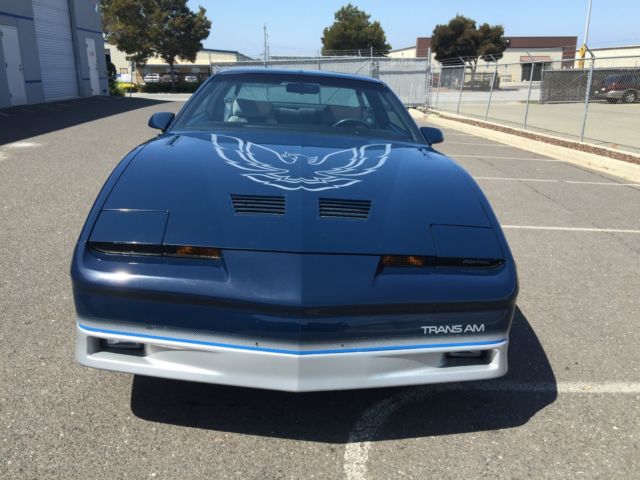
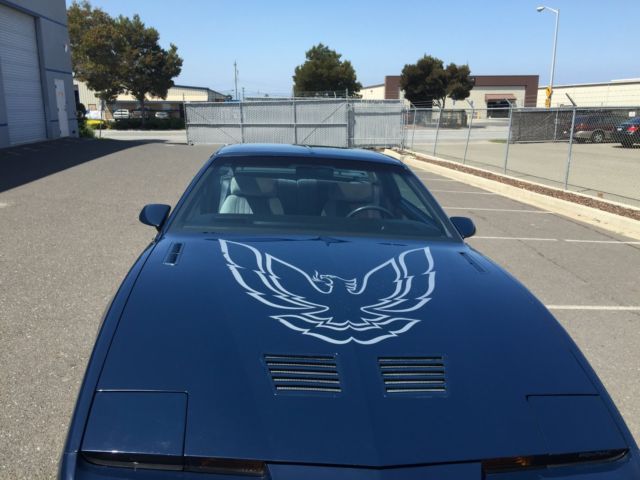

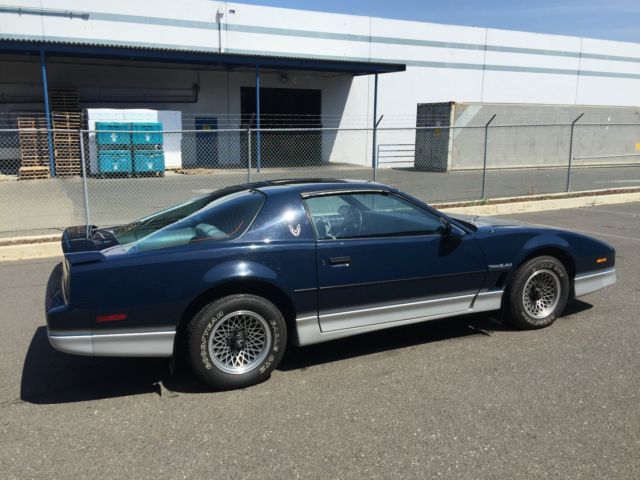


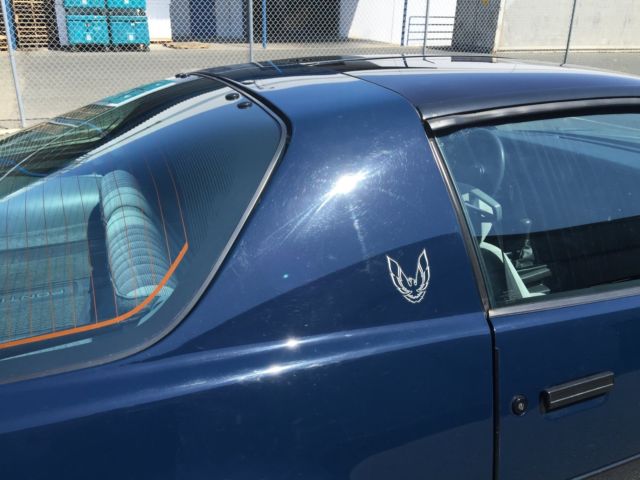


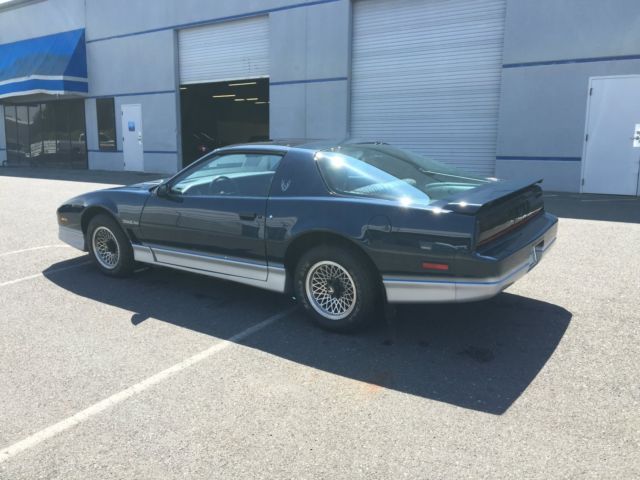



 Rare 1985 Pontiac TRANS AM 60k ORIGINAL MILES, 5 Speed Manual trans. T-Tops
Rare 1985 Pontiac TRANS AM 60k ORIGINAL MILES, 5 Speed Manual trans. T-Tops
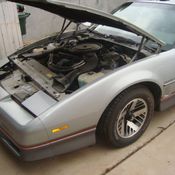 1985 Pontiac Trans AM all original 38k miles 305 4 barrell 5 speed manual T-tops
1985 Pontiac Trans AM all original 38k miles 305 4 barrell 5 speed manual T-tops
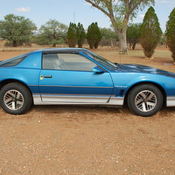 1985 Pontiac Trans Am, Factory 5-speed, 61,000 original miles, T-tops
1985 Pontiac Trans Am, Factory 5-speed, 61,000 original miles, T-tops
 1989 Pontiac Trans AM GTA WS6 50,000 miles excellent condition
1989 Pontiac Trans AM GTA WS6 50,000 miles excellent condition
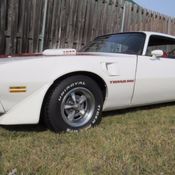 Pontiac Trans Am, nicely restored, low miles, excellent condition
Pontiac Trans Am, nicely restored, low miles, excellent condition
 1987 Red Pontiac Trans Am GTA Low Miles Garage Kept Excellent Condition
1987 Red Pontiac Trans Am GTA Low Miles Garage Kept Excellent Condition
 1987 Pontiac Trans Am GTA - Low Miles, Excellent Condition, Summer Car Only!
1987 Pontiac Trans Am GTA - Low Miles, Excellent Condition, Summer Car Only!
 1990 Pontiac Firebird Trans Am - black - 5 speed manual t tops new wheels tires
1990 Pontiac Firebird Trans Am - black - 5 speed manual t tops new wheels tires